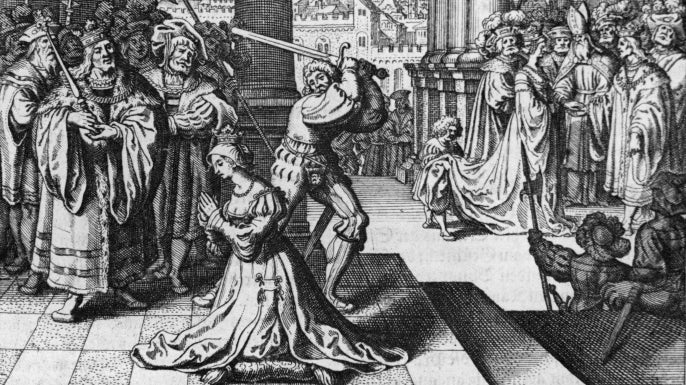In the year 1536, King Henry VIII of England leveled grave accusations against his second wife, Anne Boleyn, who had been proclaimed queen in 1533.
The charges brought forth included allegations of adultery, incest, and conspiracy against the king.
Following a trial where she was found guilty, on May 19, 1536, Anne Boleyn met her demise at Tower Green in London, facing execution not by the conventional axe-wielding headsman but by a French swordsman.
It is widely believed by historians that the accusations hurled against Boleyn were unjust, strategically fabricated by King Henry VIII to rid himself of her as his spouse and pave the way for his marriage to his third wife, Jane Seymour, in a bid to secure a male heir.
Prior to ascending to the throne as queen, Anne Boleyn held a position in King Henry VIII’s court, initially serving as a maid of honor to his first wife, Catherine of Aragon, with whom he was married from 1509 to 1533.
Boleyn’s refusal to become the king’s mistress led to Henry’s infatuation with her, ultimately culminating in her becoming the object of his desire.
Hailing from an esteemed family lineage, Anne Boleyn possessed a refined upbringing and had served in the royal courts of other European nobility.
Apart from excelling in customary courtly pursuits like dancing, singing, and the art of flirtation, she also wielded influence in political spheres.
Drawing from her father’s diplomatic background, Anne engaged in diplomatic affairs at court, interacting with notable political figures such as Thomas Cromwell, a key political figure who later ascended to the role of Henry VIII’s chief minister in 1532.
Anne Boleyn left an indelible mark on English history, particularly in the genesis of the Church of England.
For Henry VIII to wed Anne, he needed to dissolve his marriage to Catherine of Aragon, a union that had failed to produce a male heir.
Despite facing opposition due to the prohibition of divorce by the Catholic church, Henry relentlessly pursued an annulment, citing biblical justifications to Pope Clement VII.
Upon the Pope’s refusal to annul his marriage, Henry VIII, aided by Thomas Cromwell, severed ties with the Catholic church, asserting England’s autonomy from papal authority.
Subsequently, Henry clandestinely married Anne in 1533, triggering their excommunication from the Catholic church.
This event catalyzed the establishment of the Church of England, marking a pivotal moment in the Protestant Reformation era.
Anne Boleyn’s fortunes dwindled when she failed to bear a male heir, leading to her downfall.
Her inability to produce a male offspring, coupled with Henry VIII’s adulterous liaisons with her ladies-in-waiting, notably Jane Seymour, precipitated her fall from grace.
Concurrently, conflicts arose between Boleyn and Cromwell concerning foreign policy and the king’s financial matters, further exacerbating her precarious position.
Amidst mounting tensions, a clandestine investigative commission, spearheaded by Cromwell and Boleyn’s father, probed into her alleged transgressions.
Accusations of illicit relationships with courtiers, including claims of incest with her brother and employing sorcery to enchant the king, were brought against her.
Subsequently, Anne faced a trial on May 15, 1536, where a jury comprising her own uncle and a former fiancé pronounced her guilty.
In the tragic turn of events, King Henry VIII sanctioned Anne Boleyn’s execution, thereby clearing the path for his nuptials with Jane Seymour, which transpired shortly after Anne’s beheading on May 30.
The saga of Anne Boleyn stands as a poignant testament to the capricious nature of power and intrigue that defined the Tudor era.



